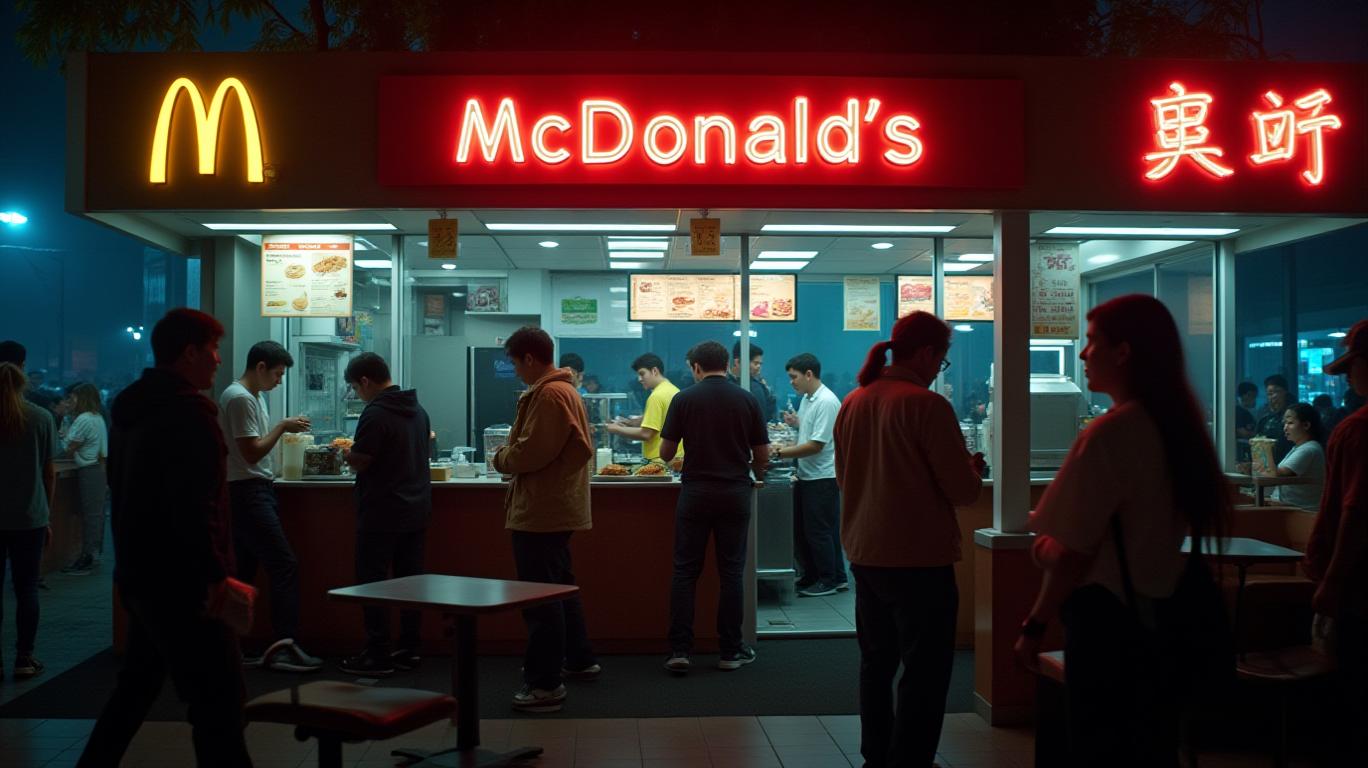McDonald's 24/7 Playbook: How Scaling Hours and Tech Dominates the Fast-Food Race
McDonald's latest moves to extend operating hours, expand locations, and double down on AI-driven operations aren't just about keeping burgers hot—they're a masterclass in leveraging labor market dynamics to dominate an increasingly competitive fast-food landscape. Let's dissect why this strategy is a buy signal for investors.

Operational Scalability: 24/7 Access = 24/7 Revenue
By extending hours to midnight or later in 90% of U.S. locations,
isn't just catering to late-night cravings—it's turning restaurants into 24/7 profit centers. The math here is simple: longer hours mean more transaction opportunities. The company's goal to open 9,000 new U.S. locations by 2027 (a 67% increase) amplifies this effect, creating a geographic density that rivals convenience stores.But scalability isn't just about real estate. McDonald's has baked operational consistency into its DNA. Its global rollout of the "Best Burger" (80% of restaurants now serving it) and AI-optimized inventory systems ensure that even as locations surge, quality and efficiency stay intact. This is a stark contrast to smaller chains that buckle under rapid expansion.
Labor Dynamics: Hiring 375,000 Workers? It's a Smart Play, Not a Cost Bomb
The company's plan to hire 375,000 summer workers—the largest such push in recent years—might raise eyebrows about wage pressures. But here's the kicker: McDonald's is using labor as a strategic asset, not a liability. By scaling staffing during peak demand periods, it avoids the "just-in-time" staffing bottlenecks that plague rivals.
Moreover, its AI integration (predictive scheduling, voice-order accuracy, edge computing for equipment maintenance) reduces reliance on human intervention for routine tasks. This means labor can focus on customer-facing roles, boosting satisfaction and retention. The net result? A higher-margin model where tech handles the grind, and humans handle the hospitality.
The AI Edge: Why This Isn't Just Another Burger Tech Gimmick
McDonald's isn't just slapping AI stickers on its kiosks. Its partnership with Google Cloud's edge computing enables real-time data processing at individual stores, letting each location act as a micro-data center. This means:
- Inventory optimization: AI predicts demand down to the fryer's oil level, slashing waste.
- Predictive staffing: Algorithms flag when a store needs extra hands 15 minutes before a rush.
- Customer retention: The MyMcDonald's Rewards program uses AI to turn one-time midnight customers into loyalty members via personalized offers.
The result? A system where every hour, whether 6 AM or 2 AM, operates at peak efficiency.
Why This Spells Investment Opportunity
- Margin Expansion: Tech-driven efficiency + 24/7 revenue streams = fatter margins. McDonald's 30% sales growth over four years isn't a fluke—it's a formula.
- First-Mover Advantage: Competitors like Wendy's or Chick-fil-A lack McDonald's scale and tech stack to pull off 24/7 expansion.
- Labor Market Flexibility: With unemployment at 3.4% (and rising), McDonald's hiring blitz positions it to lock in talent before costs escalate.
The Bottom Line: McDonald's Is Rewriting the Fast-Food Playbook
By weaponizing labor as a strategic tool and embedding AI into every operational facet, McDonald's isn't just defending its crown—it's building a moat around it. With 9,000 new locations on tap and a model that thrives in both peak and off-hours, this isn't a fad. It's a decade-long growth story.
Investors who miss this move won't just miss out on burgers—they'll miss out on a revolution.
Act now—before the golden arches glow 24/7 everywhere you look.

Comments
No comments yet